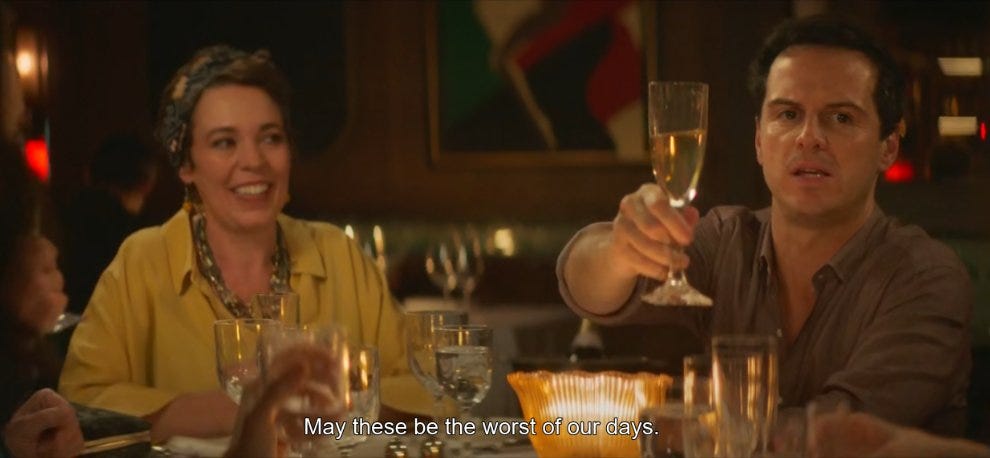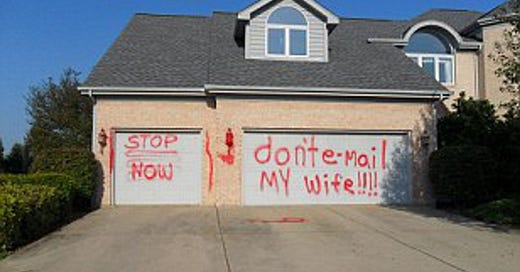I’m in the throes of finishing my thesis and It’s Been a Time.
So I’ll be skipping the overt anxiety-talk this month because, quite frankly, I’m in it.
I don’t have the bandwidth for anything profound this month, so the February newsletters will be recommended reading lists for folks who ask me, “what is creative nonfiction?” and “isn’t ‘creative nonfiction’ an oxymoron?” and “have you read that fake memoir from the 00’s about the guy who pretended to be a junkie and Oprah got mad?” and “how do you study this exactly?”
In other words: I suppose this two-parter is meant to displace the existential distress I feel when asked any of these questions in person.
This will be Part 1.

I’ll start by telling you what I tell my students the first day of their academic writing class: that the word “essay” in English stems from the French verb essayer, which means “to try.”
I point this out to remind everyone that, counter to popular belief from nightmarish high school assignments, essays aren’t meant to have groundbreaking answers, prove the writer is smart, or even fully reconcile anything. Every single essay is an attempt to tell (a) truth(s) in a way that’s meaningful or adds something to an ongoing conversation. Of course, some nonfiction fails—and that’s actually a good thing. Even failures add something new to our collective understanding of the world.
Joan Didion, that incisive grandmother of contemporary nonfiction, says, “We tell stories in order live,” and while many literary types like to put this phrase on tote bags and apparel, it’s actually a really melancholy idea. What Didion means is that we tell ourselves stories about the world to make meaning from chaos, to find significance within the raw and difficult challenges of being alive. We’ll fail at telling those stories sometimes because real life does not typically operate as a narrative. Still, writers attempt to do life justice on the page anyway.
I say this to offer non-writers (and writers) a way to think about creative nonfiction in its many forms (i.e. personal essays, narrative nonfiction, historical nonfiction, memoir, literary reportage, etc.). This genre takes it cues from the essay, using conventions from poetry and fiction to try and make sense of the world around us. What makes the work nonfiction is that its spine is entirely truthful.
For those who ask for examples of what creative nonfiction can or should be, and what it looks like, here are some starter essays linked below.
A disclaimer: this list is by no means canon or even close to a substantive survey of creative nonfiction. These are just works that I think exemplify what the genre can do. I haven’t put these in any particular order either.
I’ll share more essays & thoughts in Part 2.
“The Fourth State of Matter” by Joann Beard (The New Yorker): Do me a favor. When you read this just sit down and go for it. Don’t google Joann Beard or the title or anything. If you cry easily, maybe make sure you have some tissues nearby. What begins with a woman caring for her elderly dog evolves into a much larger and more expansive tragedy. I truly think this is one of the most beautiful and breathtaking essays I’ve ever read. It delves into the dark absurdities of mortality, our place in the universe, and the ripples of tragedy.
“The Pain Scale” by Eula Biss (The Seneca Review): Frustrated by her inability to properly convey the chronic pain she is experiencing, Eula Biss (also the author of On Immunity: An Inoculation; Notes From No-Man’s-Land; and Having and Being Had) breaks down the inadequacy of the standard numeric pain scale used in many doctor’s offices. Using this scale as the structure of the essay itself, she pulls from personal experience, Dante’s Inferno, the history of science, and faith to make her argument.
“Notes of a Native Son” by James Baldwin: Many of you likely know that Baldwin as an American literary icon, a queer Black man ahead of his time in more ways than I can count, but: this essay might be my favorite of his. I’m particularly fond of the first paragraph, which never fails to take my breath away in its sweeping approach to race, violence, the death of his father, and the Harlem race riots. He immediately draws you in to a fraught and complicated time in his life, as well as the life of our nation.
“Slouching Towards Bethlehem” by Joan Didion: I told you we’d talk about our dear friend Joanie a bit more. This is certainly one of her most famous essays, sure, but it’s also a really good introduction to what she does best: observe cultural moments and the people swept up in them, peering past their facades to subtly reveal their truest selves, warts and all. Here she sets her sights on the Haight-Asbury in San Francisco, following around hippies and counter-cultural figures with a sharp sense of honesty, wit, and skepticism.
“Choose Your Own Adventure” by Carmen Maria Machado: This one’s for the kids who grew up reading Choose Your Own Adventure Books. I’ll let you know that I adore Machado’s fiction, and therefore I was always going to be biased about her nonfiction. When her powerful, unconventional, fragmentary memoir In The Dream House was published, I was so curious to see how she brought her surreal style to bear on an abusive queer relationship she survived during her young adulthood. The “Choose Your Own Adventure” section of the memoir (excerpted for our purposes here) is, admittedly, a tough read: using the structure of the popular book series, Machado walks the reader through the horrendous cycle of intimate partner violence and abuse, impossible to escape no matter how hard you try. I’ve linked to the This American Life version of this excerpt because I think the audio version is an interesting way to first experience the work.
“The Friend: Love is Not a Big Enough Word” by Matt Teague (Esquire): Ok, yes, if this one sounds familiar, that’s because it was recently made into a corny movie starring Dakota Johnson, Casey Affleck, and Jason Segel. But the inspiration for this movie bloomed out of an essay in which a young husband recounts how one of his wife’s closest friends moved in with their family to help them both during her chemotherapy treatment. Matt Teague has acknowledged that the movie is, simply put, a far more watered down version of what really happened. A warning for those who want to read this essay though: this one is not for the faint of heart. It’s a graphic, real-life body horror in which Teague’s wife dies slowly and painfully of cancer, and Teague does nothing to hide the gruesome details from the reader. I had to read it in two sittings. *But* this is clearly a decision he made deliberately: just as Teague had to fully open up his home and family life to their friend in order to receive the support the family needed, Teague must fully open up to the reader to share the gravity and significance of his extreme journey through loss and vulnerability.
“The Communal Mind” by Patricia Lockwood (London Review of Books): Lockwood is a poet, but not the kind of poet you expect to find in a dusty poetry anthology. I’ve worshipped her beautiful, bizarre prose since her memoir Priestdaddy came in to my life. An equal parts raunchy-yet-profound Twitter personality and writer, Lockwood attempts to write a narrative that conveys the feeling of scrolling through a social media feed, memes and all. It’s funny, weird, warm, melancholy, and unexpected in the most delightful ways possible. This was based off of a talk she gave for the LRB, and it seems to have gone on to inspire her latest novel as well.
“Ecstasy” by Jia Tolentino (The New Yorker): I’ve followed Jia’s work for a long time, ever since she began writing snarky pieces on Jezebel and The Awl (RIP Awl). Her essay collection Trick Mirror features a treasure trove of essays, but I love this one the most by far. She tells the story of her own relationship to religion, drugs, and pleasure in the city of Houston, all set to the soundtrack of the chopped-and-screwed hip-hop scene nearby. A lovely and fascinating read.
“Speaking in Tongues” by Zadie Smith (NY Review of Books): A few of my fellow writing instructors turned me on to this one and it’s become a favorite. In it, British-born writer Zadie Smith examines the many voices she holds as a woman of color, as an intellectual, as someone with a British accent, and beyond, as well as her own inability to come to terms with the many languages she speaks. She also her admires those who can “code switch,” or move between, these voices easily (despite her own clear knack for this herself).
“Consider The Lobster” by David Foster Wallace (Gourmet): *sigh* I can’t do a round-up of essays without mentioning DFW. I have my Qualms with him (namely how his abusive behavior towards women was shoved under the rug, while he was alive but especially after his death by suicide. Don’t @ me). That being said, this piece really is phenomenal. What begins as a benign trip to a lobster festival in Maine turns into a far more complex exploration of ethics, pain, and consumption.
“Dwayne Johnson for President!” by Caitlin Weaver (GQ): OK, listen. I know that this is a real batshit, ridiculous suggestion. It’s a few years old as you can tell from the headline, but Caitlin Weaver is a fastidious and hilarious journalist who does such an excellent job profiling Dwayne “The Rock” Johnson while also having the time of her life doing it. If you need a smile, this is a fun one. This will also prep you for my next newsletter, which will feature some more *quirky* creative nonfiction reads.
(If I know you in person and you receive and read this message and I owe you a text/call/email/FaceTime/etc: I pre-wrote this before the final thesis crush. I’ll get back to you soon, I promise, I feel guilty, I love you, bye)





